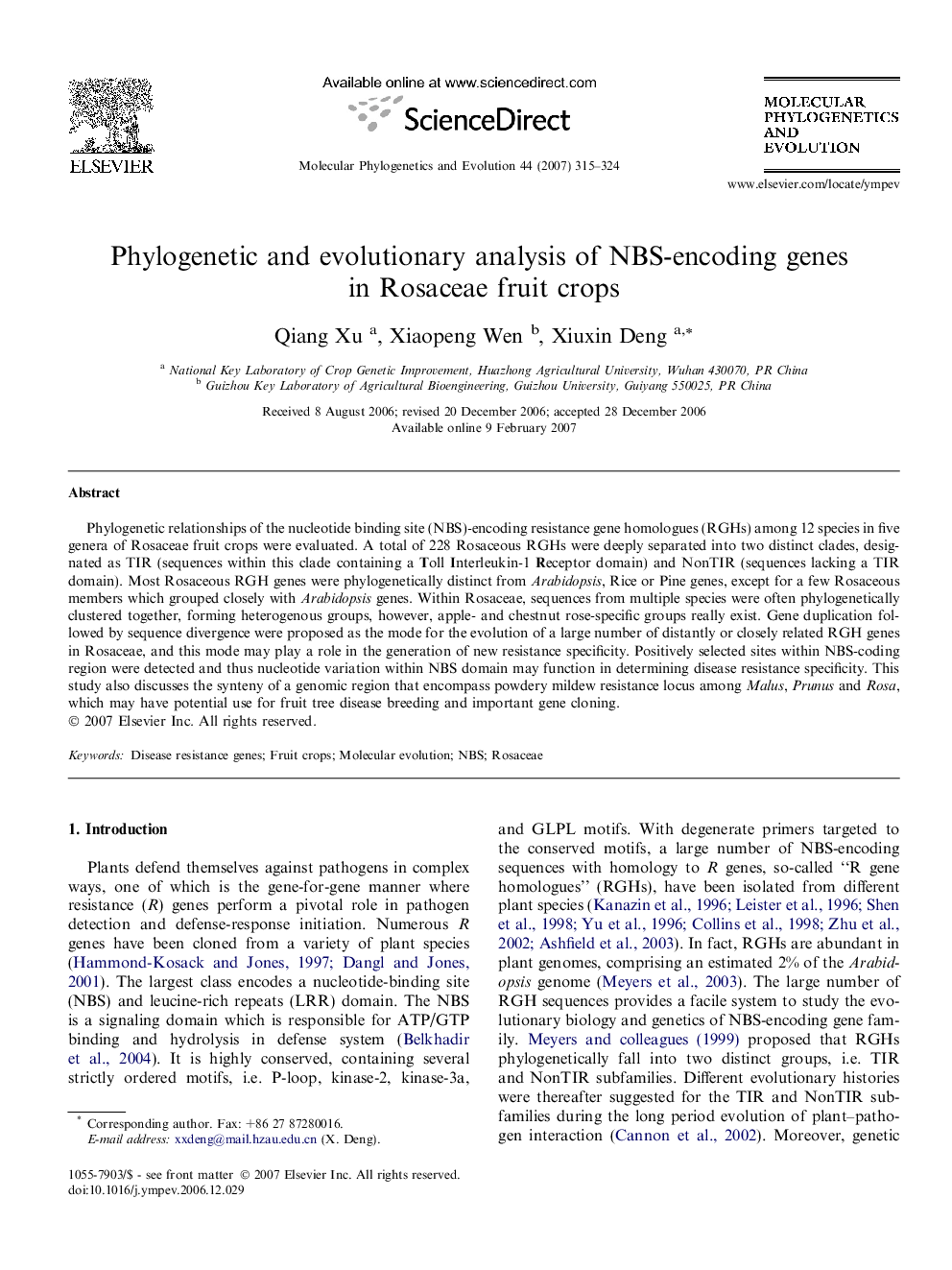| Article ID | Journal | Published Year | Pages | File Type |
|---|---|---|---|---|
| 2835717 | Molecular Phylogenetics and Evolution | 2007 | 10 Pages |
Phylogenetic relationships of the nucleotide binding site (NBS)-encoding resistance gene homologues (RGHs) among 12 species in five genera of Rosaceae fruit crops were evaluated. A total of 228 Rosaceous RGHs were deeply separated into two distinct clades, designated as TIR (sequences within this clade containing a Toll Interleukin-1 Receptor domain) and NonTIR (sequences lacking a TIR domain). Most Rosaceous RGH genes were phylogenetically distinct from Arabidopsis, Rice or Pine genes, except for a few Rosaceous members which grouped closely with Arabidopsis genes. Within Rosaceae, sequences from multiple species were often phylogenetically clustered together, forming heterogenous groups, however, apple- and chestnut rose-specific groups really exist. Gene duplication followed by sequence divergence were proposed as the mode for the evolution of a large number of distantly or closely related RGH genes in Rosaceae, and this mode may play a role in the generation of new resistance specificity. Positively selected sites within NBS-coding region were detected and thus nucleotide variation within NBS domain may function in determining disease resistance specificity. This study also discusses the synteny of a genomic region that encompass powdery mildew resistance locus among Malus, Prunus and Rosa, which may have potential use for fruit tree disease breeding and important gene cloning.
